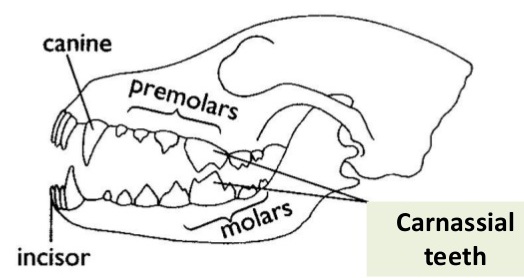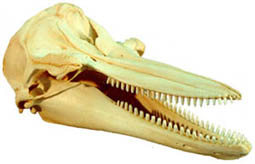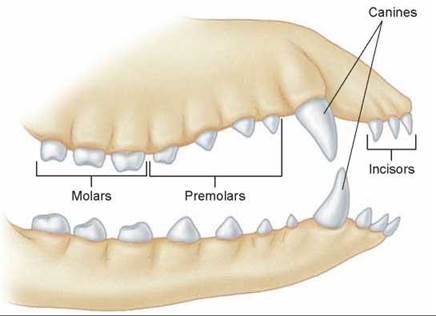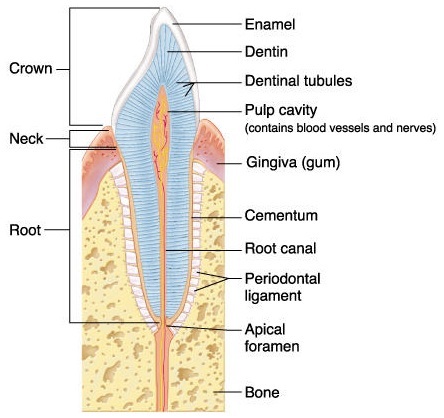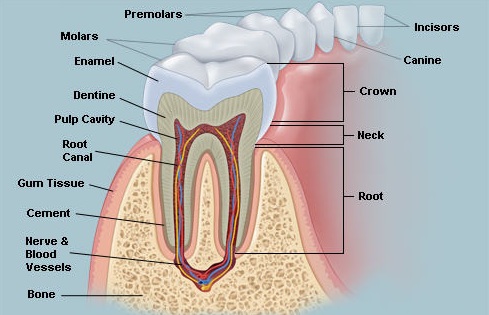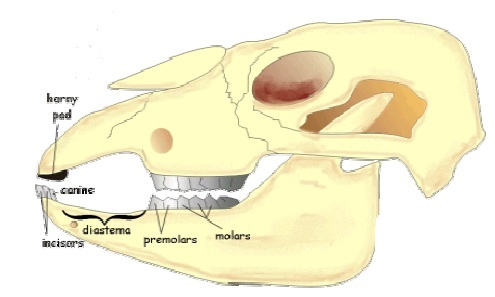- Their incisors are chisel shaped and closely fitting to seize the prey.
- Their canines are long, conical and curved to hold, kill and tear the prey.
- Some of their premolars in the lower and upper jaw are modified into specialized carnassial teeth which have smooth sides and sharp edges to slice through flesh and crush bones.
- Premolars and molars are broad with cusps for crushing bones.
- Their jaws are attached to powerful muscles that move the jaws up and down.
- Carnivores are adapted to fast running by possessing well developed leg muscles.
